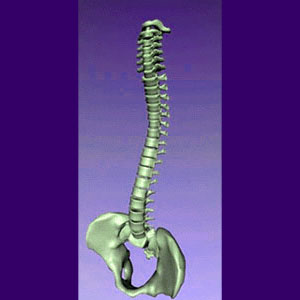
A spinal infection can be caused by many possible reasons and may present a serious symptomatic profile for any patient. Infections are most often the direct result of back surgery in which the victim suffers a most unwanted and problematic complication either during the actual procedure or during the recovery period. Other possible sources of infections in the spinal structures include decreased immune response, various disease processes and general systemic infections which settle in the backbone or spinal canal.
This article will explore the causes and symptoms of infections which affect the spinal structures. This essay is crucial for any patient who suspects an infectious process as being solely or partially responsible for sourcing their suffering, as well as any patient facing invasive surgical intervention for back or neck pain.
Types of Spinal Infection
Here are some of the many possible examples of infectious processes which might affect the spinal structures:
Bacterial infection after surgery can take many forms and may be due to introduction of foreign bodies during the procedure or contamination of the wounds after the operation.
Osteomyelitis of the vertebral bodies involves infection of the actual spinal bones.
Meningitis infects the cerebral spinal fluid.
Discitis is an infection in the disc space at a particular intervertebral level.
Epidural abscesses can cause neurological effects virtually anywhere in the spinal canal.
Subdural abscesses are deeper in and can be more serious than epidural variety.
Intramedullary abscesses exist inside the spinal cord.
Spinal Infection Symptoms
The symptoms of various types of infections may vary, but usually have several things in common. Some of the common signs of infectious processes include:
Pain in a specific or general area.
Palpable heat in the affected area.
Visible redness or red lines in the affected area.
Open wounds may be odorous or may leak pus.
Fever, nausea and vomiting are common.
Neurological dysfunction may occur from infectious processes.
Be sure to monitor yourself for signs of infection after any invasive spinal procedure, including injection therapies and any type of surgery. Also, remember to monitor yourself for symptoms if you have been exposed to a known infectious agent, such as meningitis. To learn more about what you can do to prevent infections in the spine and spinal cord, talk to your doctor.
Spinal Infection Issues
Obviously, the spinal region is not a place you want to suffer any infection. Contamination of the spinal structures can lead to very serious consequences, including chronic pain, functional impairment, paralysis or even death. If you suspect infection, be sure to see your doctor or go to a local emergency room right away.
In my experience dealing with back pain patients, most of the infectious conditions I come across are due to the complications of invasive back pain treatment. Many patients suffer minor to moderate infections from epidural injections. Many more suffer mild to extreme infections from minimally invasive or fully open spinal surgery.
Always consult with your doctor to find out how you can work together to minimize the chances for infection of the spine before, during or after any planned surgical procedure.




